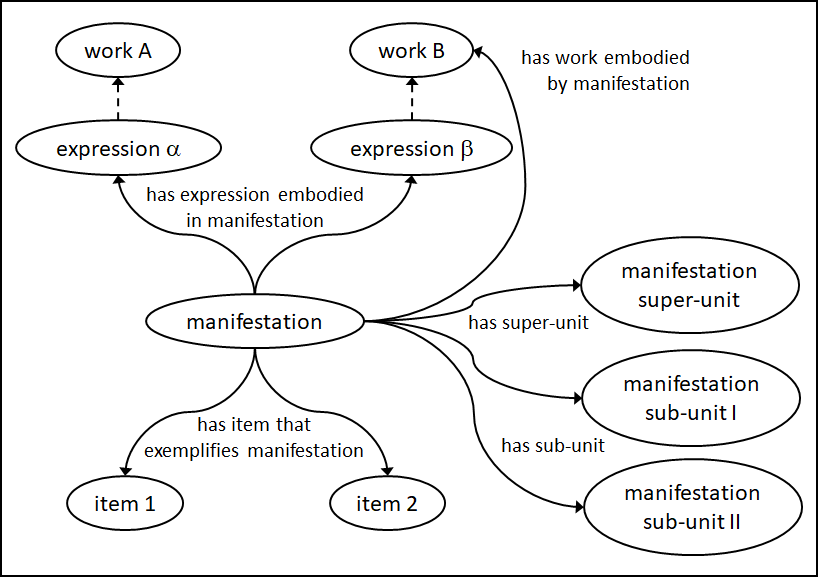Preliminary assessment
Carry out a preliminary assessment of the manifestation before recording a description.
The assessment determines if the manifestation requires a separate description, and the granularity and completeness of the description that is required to meet the needs of the cataloguing agency.
The granularity of a manifestation description is dependent on the number of carrier and content components that are present in the manifestation. The completeness of a manifestation description is dependent on the intention to publish or produce it in a single contiguous process or in a set of discrete processes over time.
Assess the manifestation to determine the number and type of related resource entities, and to decide if they are to be associated with the manifestation, noted in the description, or omitted from the description.
The number of items that exemplify a manifestaton may be indeterminate and is not generally relevant to the description of a manifestation. An instance of an item describes only characteristics that are specific to the item, including modifications that are made after its publication or production.
An instance of a manifestation may be published or produced in more than one physical or logical part.
The preliminary assessment covers three distinct characteristics that apply to every manifestation:
- A manifestation may be published or produced in one or more units.
- A manifestation may embody one or more expressions that realise one or more works.
- A manifestation may embody the content of a work that is planned to be static or to change over time.
Each characteristic meets one of two mutually exclusive conditions at the broadest level. One of the two conditions for each characteristic must apply to every manifestation:
- A manifestation is in either one unit or more than one unit.
- A manifestation embodies either one expression or more than one expression.
- A manifestation embodies expressions of works that are either static or are planned to be embodied over time.

Figure 2 shows the possible instances of resource entities that may be related to an instance of a manifestation in an information resource.
For each assessment characteristic, determine the number of resource entities that are associated with the manifestation. Apply any mandatory stipulations, and choose one or more of the following options for each instance of a resource entity:
- Record an appropriate relationship element to associate the instance of a resource entity with the manifestation.
- Record an appropriate note element to describe one or more instances of a resource entity within the manifestation description.
- Record an appropriate manifestation statement element to describe one or more instances of a resource entity within the manifestation description.
- Omit the instance of a resource entity from the manifestation description.
See also: Mandatory elements
See also: has expression embodied in manifestation
See also: has work embodied in manifestation
The characteristics to be assessed are mutually independent and are analysed in separate stages. The order of analyses is not important; ISBDM recommends following the order given here.